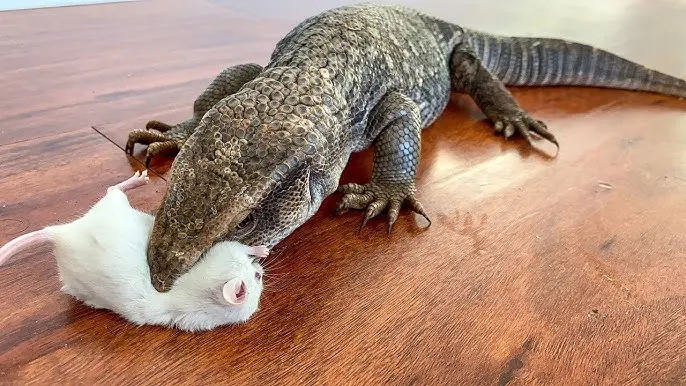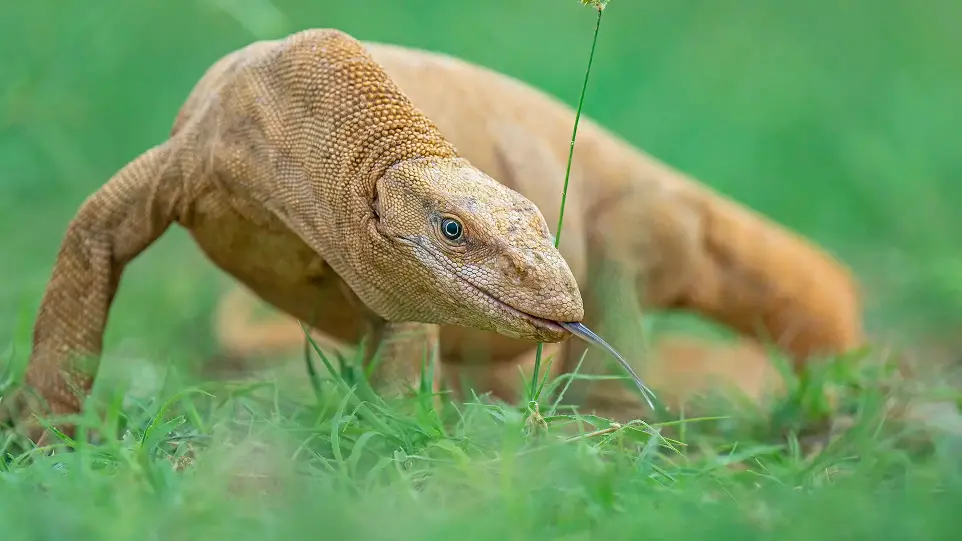Masters of the Urban Jungle: Discover the World of Monitor Lizards!

Monitor Lizard (Varanus)
Size: ranges from 20 cm to 3 meters depending on species
Color: Varies from earthy tones like brown, grey, & green
- Long, muscular body with a powerful tail
- Sharp claws and forked tongue resembling that of snakes
- Prominent, angular head with small, rounded nostrils
- Body color is with speckled or striped patterns
- Highly agile with strong swimming abilities
- Keen sense of smell and sharp eyesight for hunting prey

Feeding Preferences
These reptiles are opportunistic feeders, adapting their diet to what is readily available. In developed areas, they are often drawn to food waste, leftover scraps, or small animals such as rodents, birds, and insects. Their scavenging behavior also leads them to consume carcasses, making them natural cleaners in some respects. They are highly efficient hunters and can target nests, consuming eggs and young creatures. Their keen sense of smell helps them locate food sources, even those hidden or buried. This adaptability to different food types makes them capable of thriving in human-dominated landscapes where diverse resources are present.

Habitat
These reptiles are highly adaptable and find refuge in a variety of locations within human-altered landscapes. They frequently inhabit areas with ample cover, such as dense vegetation, abandoned buildings, or piles of debris. Drains, culverts, and other moist, shaded spaces provide ideal conditions for them to rest and hide during the day. They are also known to explore rooftops, walls, and even crevices in concrete structures, taking advantage of the warmth and safety these spaces offer. Proximity to water sources like ponds, reservoirs, or drainage systems enhances their survival, as these locations support both hydration and access to prey. Their ability to climb and burrow allows them to navigate and adapt to urban settings efficiently.

UPM's AIR Approach for Monitor Lizard:
- Assess: Inspect your property for signs of monitor lizard activity, such as tracks, burrows, or sightings. Focus on areas near water sources, gardens, and places that offer shelter. Assess the potential threats to pets, livestock, and property.
- Implement: Use targeted control methods such as humane traps, exclusion techniques, and professional wildlife management services. Secure food sources like chicken coops, pet food, and garbage to deter lizards from entering. Seal off potential shelter areas, such as under buildings or in dense vegetation.
- Review: Regularly monitor your property for signs of continued monitor lizard activity and adjust control methods as needed. Continue preventive measures, including securing food sources, reducing hiding spots, and maintaining barriers to prevent future intrusions.
Frequently Asked Questions
Monitor lizards are generally not aggressive but can defend themselves with bites, scratches, or tail whips if provoked.
Signs include burrows in soft soil, disturbed vegetation, or tracks leading to hidden areas.
It’s best to avoid contact and call a professional wildlife removal service to handle the situation safely.
While they usually avoid confrontation, they may defend themselves against curious pets if cornered.
Yes, many species are excellent climbers and can scale vertical surfaces using their strong claws.
In many regions, they are protected species, and harming or capturing them without permission is illegal.
They are drawn to areas with abundant food sources, shelter, and access to water.